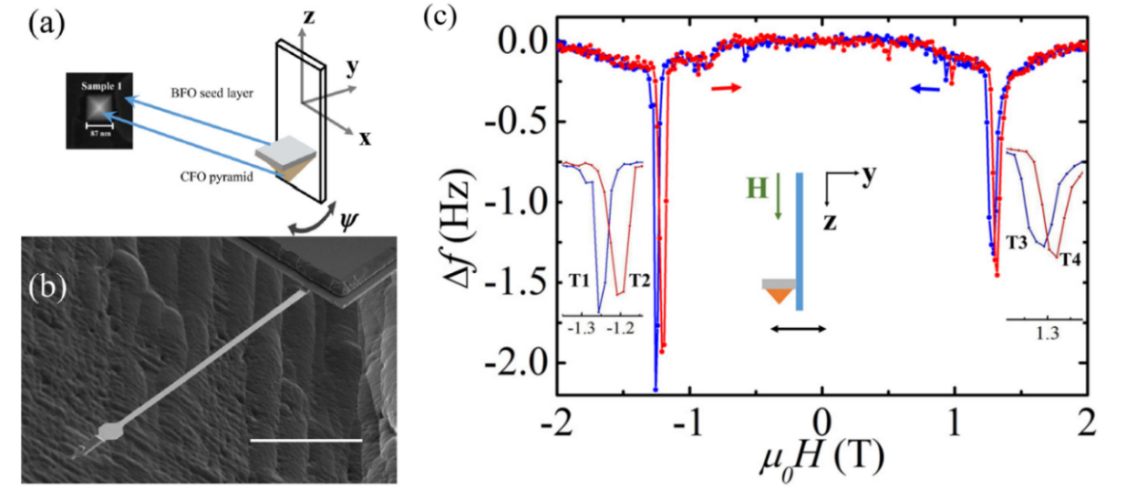
Recently, scientists at High Magnetic Field Laboratory, Hefei Institutes of Physical Science and Ningbo Institute of Materials Technology and Engineering of the Chinese Academy of Sciences (CAS) reported their success in using dynamic cantilever magnetometry (DCM) to characterize the magnetic anisotropy of single CoFe2O4 (CFO) nano-pyramid. This work was published in Applied Physics Letters.
Cantilever torque magnetometry (CTM) is a widely used magnetometry method and has been referred to as "the most accurate means of measuring magnetic anisotropy". As a new method developed in the last 30 years, dynamic cantilever magnetometer magnetometry has sensitivity several orders of magnitude higher than that of improvement compared in sensitivity compared to CTM.
However, the existing model of DCM is based on the Stoner-Wohlfarth approximation. It means the magnetic anisotropy can only be derived from sample with uniaxial magnetic anisotropy by DCM. Though a proforma consistent and complete theoretical modeling of TDM DCM has been given, a practical method for extracting anisotropy constant is still lacking in literature.
In this work, the researchers have presented a new method for investigating the magnetic anisotropy of individual nano-samples with non-uniaxial magnetic anisotropy based on DCM.
By quantitatively correlating the main features in the evolution of the magnetic energy with frequency shifts in dynamic cantilever magnetometry measurements correlating the main features observed in the evolution of the trial magnetic anisotropy energy using DCM measurements, the magnetic anisotropy constants could be calculated for from critical magnetic field strengths.
The team applied this method to an individual CFO nanopyramid sample. The magnetic anisotropy was demonstrated to be hybrid, with a cubic term and a uniaxial term.
The temperature dependence of the anisotropiesy suggested that the cubic term Kcubic was dominated by magneto crystalline anisotropy, whereas the uniaxial term Kin might be induced by coupling between the CFO pyramid and the BiFeO3 seed layer at the interface.
Their work provides an insightful perspective for contemporary DCM research. And this is the first work to measure sample with non-uniaxial the magnetic anisotropy of non- uniaxial samples by DCM.
This work was supported by the National Key Research and Development Program of China, the National Natural Science Foundation of China and the High Magnetic Field Laboratory of Anhui Province.

(a) Schematic of dynamic cantilever magnetometry (DCM). The inset shows a scanning electron microscope (SEM) image of an individual CoFe2O4 pyramid nanocrystal with a BiFeO3 seed layer. (b) SEM image of the pyramid on a cantilever. Scale bar: 50 μm. (c) Experimental frequency shift Δf as a function of magnetic field H. The red (blue) curve is for H sweeps in the positive (negative) direction. The enlarged insets represent detailed Δf vs H at transition points with magnetization jumps. (Image by YU Yang and ZOU Lvkuan)

86-10-68597521 (day)
86-10-68597289 (night)

86-10-68511095 (day)
86-10-68512458 (night)

cas_en@cas.cn

52 Sanlihe Rd., Xicheng District,
Beijing, China (100864)

